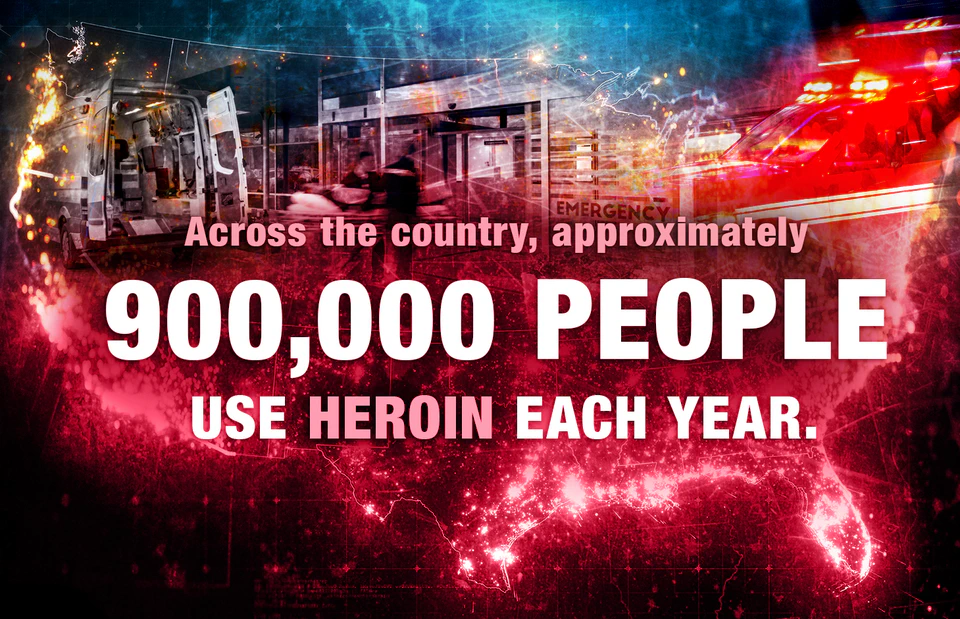Heroin Addiction

Find more information about heroin and heroin addiction with professionally reviewed up-to-date articles. Getting informed is the first step in overcoming heroin addiction.
More
Heroin is an opiate that has been ruining lives for more than a century. It was originally created as a medical drug in Germany in the second half of the 19th century. Heroin was derived from morphine which was, in turn, derived from opium. Dubbed diacetylmorphine, doctors began to prescribe this drug in the 1890s. Today, an estimated 900,000 people use heroin in the United States each year.

Find more information about heroin and heroin addiction with professionally reviewed up-to-date articles. Getting informed is the first step in overcoming heroin addiction.
More
A heroin user normally tries to conceal their drug use from loved ones. Therefore, family and friends often have to observe the many mental, physical and behavioral signs and symptoms of heroin use to realize the cause of their loved one’s problems.
More
Stay informed on the latest news, trends and statistics on heroin addiction and heroin-related news.
MoreFor a while, heroin was considered a non-addictive replacement for codeine and morphine. Widespread use of those opiates for the treatment of respiratory diseases meant that many people had become addicted to them. Doctors noted that heroin seemed to help those struggling with restless, sleepless nighttime coughing better than codeine or morphine. Briefly, heroin seemed to be a godsend.1
Shortly after the arrival of the 20th Century, heroin’s addictive properties were realized. By 1920, the American Medical Association recommended that heroin not be prescribed and that it should be completely outlawed.
In the U.S., heroin is primarily seen as a white powder, a brown powder or a sticky almost-black substance termed “black tar heroin.” It can also be found in liquid form.
Most of America’s heroin supply comes directly from Mexico or South America. The poppies from which opium comes are grown in Southeast and Southwest Asia, Mexico, and Colombia.2
On the street, heroin is usually cut (diluted) with other drugs or substances like powdered milk, quinine, sugar or starch.
Unfortunately, in the last decade, heroin has often been cut with small amounts of the powerful opioid fentanyl. Fentanyl’s potency gives a batch of heroin a greater “kick.” That means that a dealer can dilute their dope with extra powdered milk, throw in a small amount of fentanyl, and palm the product off as a more powerful batch of heroin than it really is. But because drug dealers are not pharmacists, many people have died because of batches that were too hot with fentanyl or that were mixed unevenly.
All opioids are sedatives. They make a person sleepy and lethargic. Users also feel a rush of euphoria as well as itching, nausea and dry mouth. When they consume a little too much of any opioid, including heroin, they experience respiratory depression. This effect can make them start to snore, snort, gasp or ultimately stop breathing as they lie unconscious. This is what kills them. A drug called naloxone can reverse the effects of heroin, bringing the person back to consciousness.
When a person uses heroin steadily, they build up a tolerance. A larger dose is required to create the same effects that a smaller dose did before.3 The user begins to consume larger doses, looking for the same euphoric rush they experienced previously.
When a person becomes fully addicted, they may chase the same high but all they can do is get enough heroin to prevent withdrawal from making them completely miserable and sick. In most cases, heroin addiction is accompanied by a deterioration of morals and lifestyle as the compulsion to use drugs takes precedence over other aspects of users’ lives.
Sources
UNODC. “History of Heroin.” United Nations Office on Drugs and Crime, 1953. UNODC bulletin ↩︎
NIDA. “Heroin DrugFacts.” National Institute on Drug Abuse, 2021. NIDA Article ↩︎
DEA. “Heroin.” Drug Enforcement Agency, 2020. DEA Publication (PDF) ↩︎